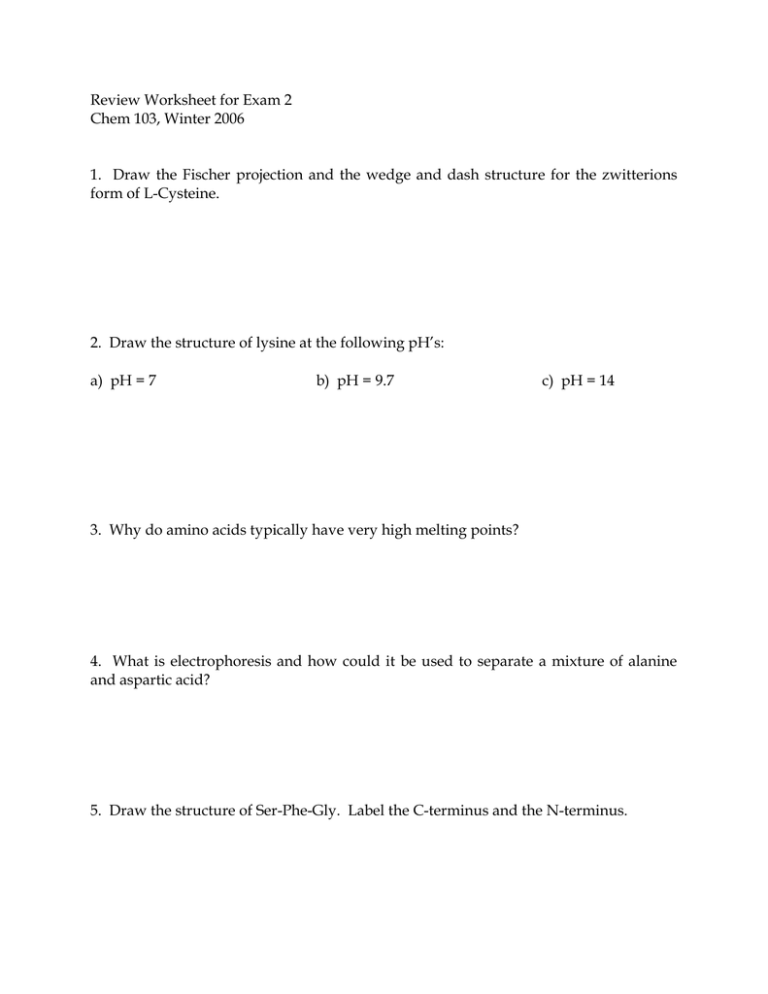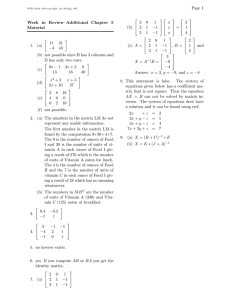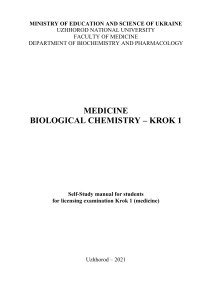Chem 103, Winter 2006
advertisement

Review Worksheet for Exam 2 Chem 103, Winter 2006 1. Draw the Fischer projection and the wedge and dash structure for the zwitterions form of L-Cysteine. 2. Draw the structure of lysine at the following pH’s: a) pH = 7 b) pH = 9.7 c) pH = 14 3. Why do amino acids typically have very high melting points? 4. What is electrophoresis and how could it be used to separate a mixture of alanine and aspartic acid? 5. Draw the structure of Ser-Phe-Gly. Label the C-terminus and the N-terminus. 6. Di-peptides are more stable to acid hydrolysis than disaccharides. What makes the peptide bond so particularly stable and strong? Use drawings to illustrate your answer. 7. What do each of the following structural levels in proteins represent? a) primary b) quaternary 8. How is a polypeptide held together in an -helix? 9. What amino acids are most prevalent in -pleated sheets? 10. What type of cross-linking mainly holds the helices together in -keratins? 11. What are salt-bridges? 12. How does isopropyl alcohol (rubbing alcohol) act as a disinfectant? 13. How does a catalyst speed up a chemical reaction? 14. Assign a name for an enzyme that would catalyze each of the following reactions: a) oxidizes serine b) hydrolyzes lactose 15. How does the induced-fit model explain how hexokinase can recognize both glucose and fructose? 16. What are isoenzymes, and how are they used to diagnose specific tissue damage? 17. If an enzyme has a maximum activity at 40C, would the activity be most reduced at 30C or at 50C? Explain. 18. Draw a plot of reaction rate versus substrate concentration for a typical enzyme catalyzed reaction. Explain the shape of the curve of your plot. 19. Why does increasing the substrate concentration reverse the inhibition by a competitive inhibitor? 20. What is an irreversible inhibitor, and why are they so toxic? 21. Antibiotics are irreversible inhibitors. Why are they so toxic to bacteria and not to us? 22. Make a drawing to show how a noncompetitive inhibitor works. 23. What are zymogens, and how are they useful in digestion? 24. How does feedback control work? Make a drawing to illustrate your answer. 25. Is a coenzyme the same thing as a cofactor? Explain. 26. What are two common functions of metal ions as cofactors? 27. What is a vitamin? 28. Which vitamin is not present in plants? 29. Which vitamin is involved in cholesterol synthesis? 30. Why does a deficiency of vitamin C lead to weakened connective tissue? 31. Is beta-carotene the same thing as vitamin A? Explain. 32. Why is vitamin D not technically a vitamin? 33. Why can a deficiency of vitamin K be dangerous going into surgery?






